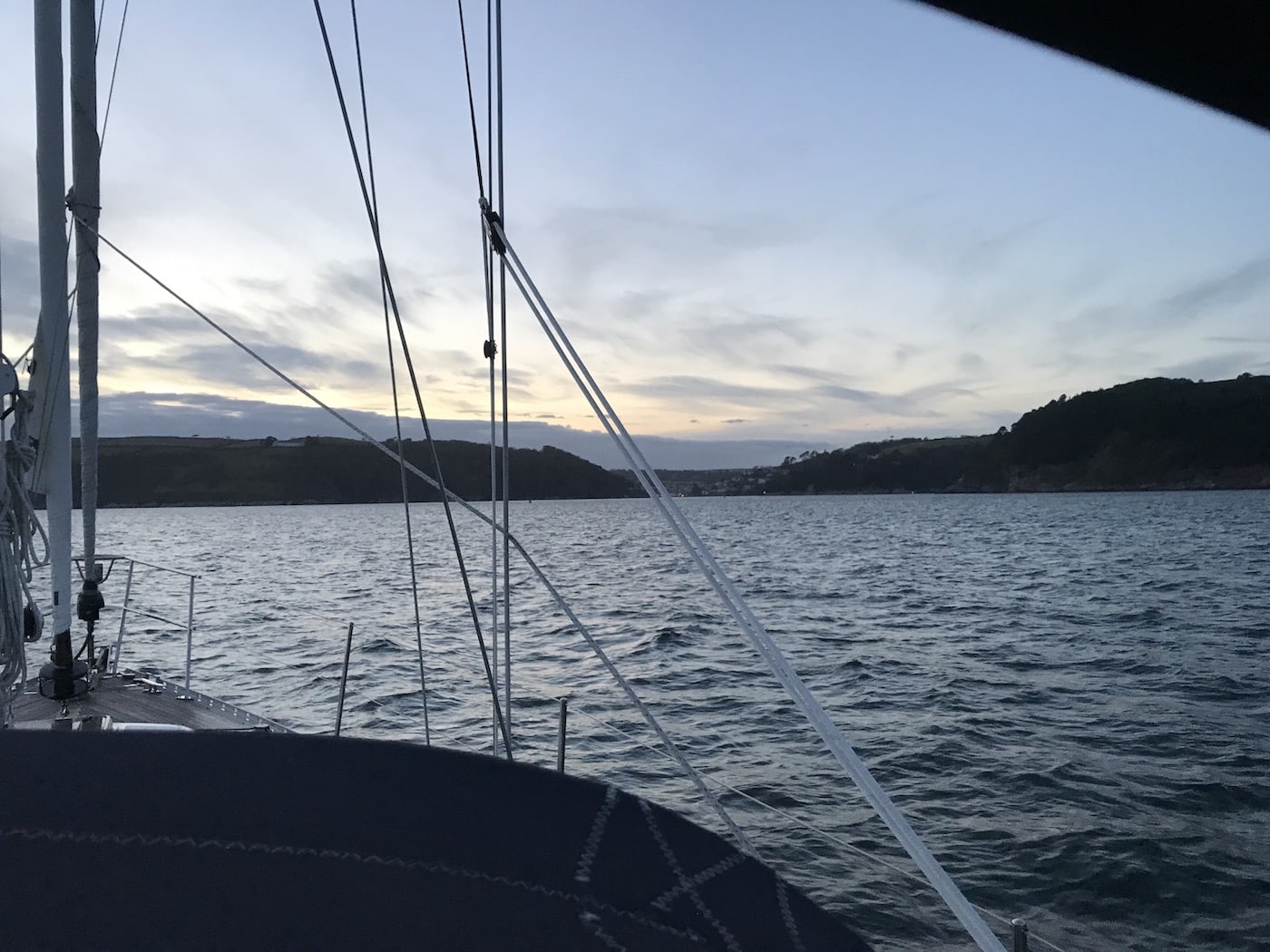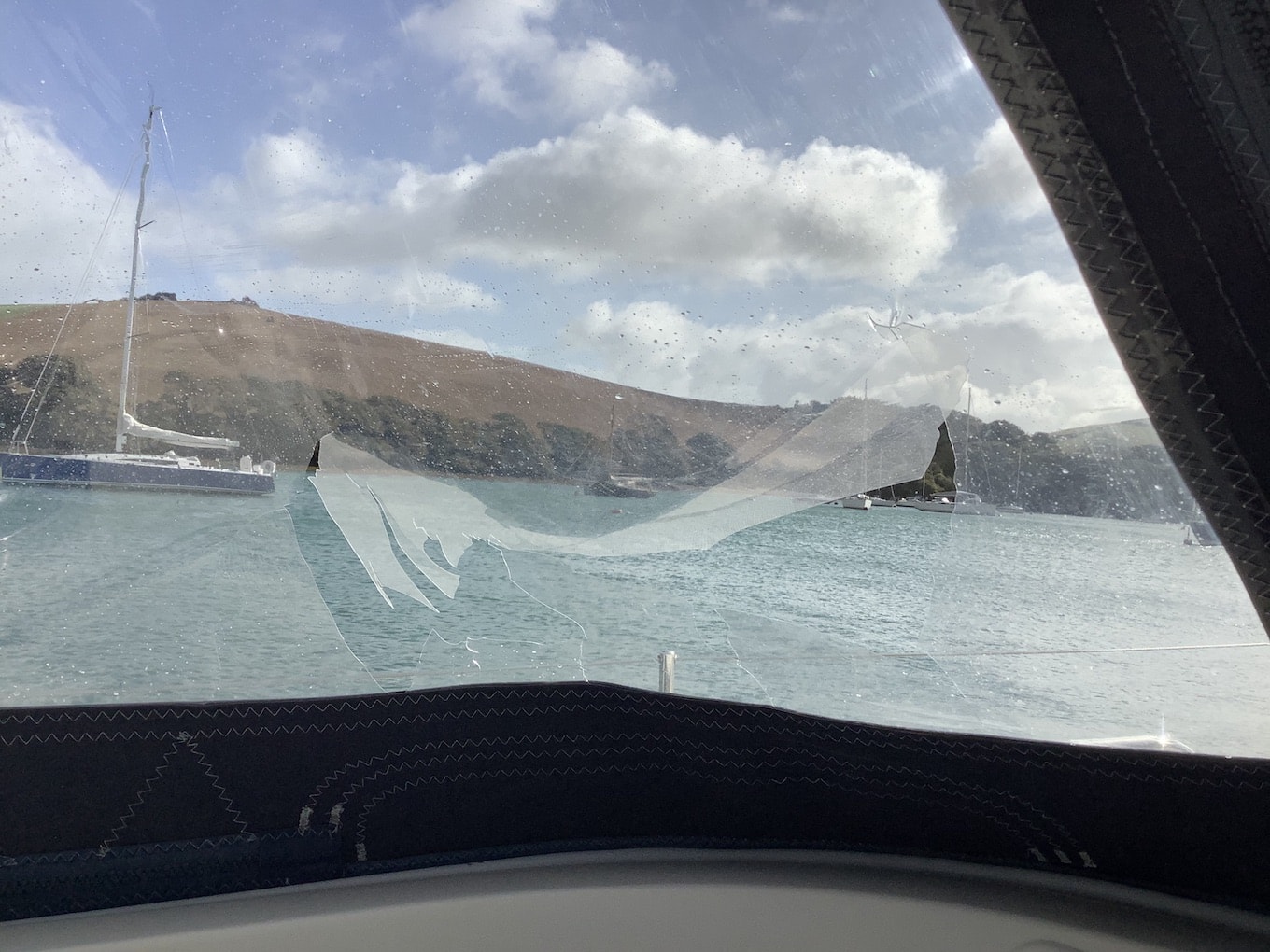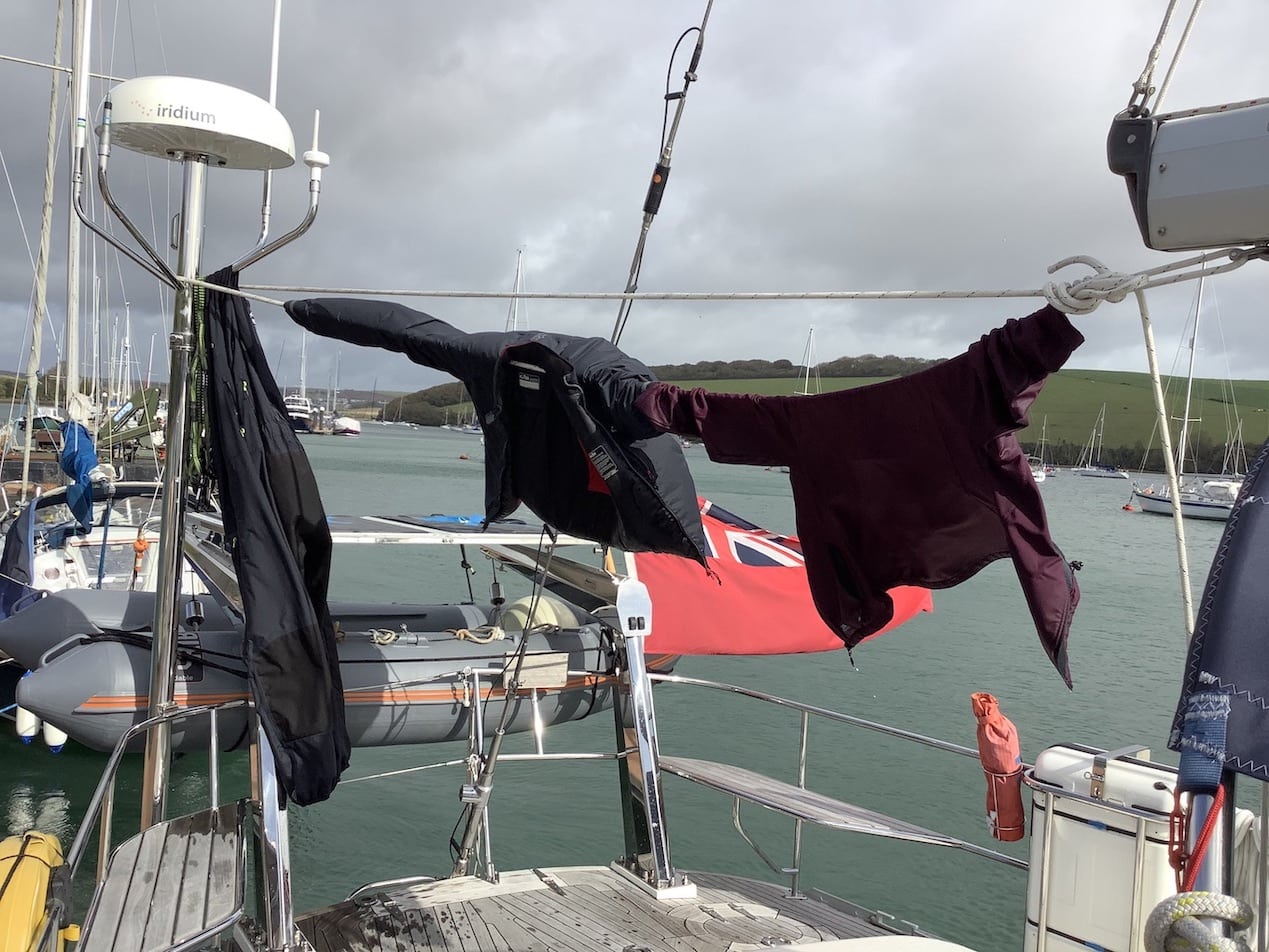We were now three weeks into our trip and were starting to consider how far west to go before starting to head back to Ipswich. We weren’t on a time constraint, but as the days passed the weather was becoming colder, wetter and certainly more windy.
Using Windy and Predictwind, we had been checking the weather at least daily and then, every couple of days, we would check out the longer forecast. There were several large low pressures heading towards the UK, bringing with them periods of very windy weather. So, to head further west or to start heading back was the topic of many discussions.
Before leaving Ipswich, we had wanted to get as far as Dartmouth and Salcombe. The forecasts were looking like we would have time to get there before the first low arrived and we knew that both rivers would provide good shelter.
So, we bit the bullet and we set off from Portland to Dartmouth.
We left the harbour at Portland and headed south to round Portland Bill and head across Lyme Bay. The wind was light, so we chose to motor.
As the day progressed, things didn’t get much better and we ended up motoring all of the way. The 59 miles took us 11 and a half hours with 10 and a half using the engine! All in all, a relatively uneventful day.
Despite having set off in good time, by the time we arrived at the mouth of the River Dart, it was starting to get dark. Using our charts and pilot guide, we knew that we needed to enter the river on a rising tide and choose our route carefully in order to negotiate a very shallow sand bar. Luckily for us the route in is well marked by the usual red and green buoys on either side of the channel. These are fairly easy to spot during daylight, but need more care at night. This called for some eagle eyed spotting of lights in the distance. It was also excellent practice for me to steer in using the sector lights. Navigating using these requires you line up the boat so that the light you see is white. If you are too far to port (left), you would see the red light and if you are too far to starboard (right), you see the green one. Then you can alter course appropriately to keep on track. Very clever.

After 5 days in Dartmouth sheltering from high winds, we decided to head to Salcombe.
The forecast was for Force 5 (17-21 knots) gusting Force 6 (22-27 knots) which we knew would be a challenge, but we decided that we needed the practice in slightly heavier winds. The trip was only 22 miles and we knew that we could always head back to Dartmouth if things got too rough.
We set off after lunch to catch the rising tide over the bar. The wind was already as forecasted, so we set the staysail and reefed the main. It was windy, but the sailing was quite smooth.
As we approached the headland, the wind picked up and the sea became choppy. There was a smaller boat just in front of us, who we had followed from the River Dart. We watched them bouncing about, persevering for about half an hour before turning back to Dartmouth. Escapade was managing well, so we kept plodding on.
The sea state continued to worsen and by the time we were at the tip of the headland, we were in Force 6 (22-27 knots) gusting Force 8 (34-40 knots). The swell was about 4m and the waves seemed huge. Martin found it exciting and was hand steering the boat, predicting the swell and surfing down the waves. I sat in the cockpit, watching the waves tower above the boat. There are no pictures or video as I was concentrating on holding on very tightly!
These conditions would have been challenging enough in a straight line, but we needed to turn to get around the headland. We prepared to tack and as the Genoa was moving across to the other side of the boat, the wind caught one of the sheets (ropes). It flailed viciously, whipped the acrylic window on the cockpit and smashed it! Thank goodness it didn’t hit one of us, it could have been a broken bone.
After what seemed like an eternity, we rounded the headland and headed for the calmer waters of the Kingsbridge Estuary.
What a contrast the day had been to our journey to Dartmouth.


Awesome for you and Martin to have experienced so heavier weather to gain confidence in Escapade. She is definitely the boat for heavy weather sailing and you would feel very safe. Thank goodness the only damage is a repair to the dodger window. Keep safe.
Hi Leanne and John,
Great to hear from you! We have been following your ‘adventures’ on your website. Who would have thought 2020 would bring such challenges??
Escapade was great on our travels and, like you say, it is so important for us to experience that first hand. We are definitely pleased with our choice.
Stay safe and hope you get some sailing soon x